20131220 Gaia in the sky - Gaia
Gaia in the sky |
|
|
Following the DPAC call "Take a picture of Gaia", amateur astronomers from around the world as well as others interested in Gaia have submitted various entries. The first images and videos of Gaia on its way to L2 are available now. All submissions proved to be very important for GBOT, the Ground Based Optical Tracking programme, as they helped to estimate Gaia's brightness at L2. |
|
| Dave Herald, Murrumbateman, Australia | |
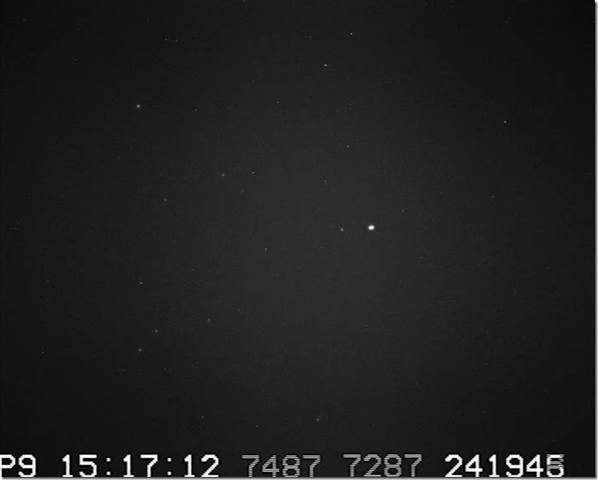 |
|
|
Taken with a 40cm SCT using a WATEC 120N+ video camera. Site location E07 – at long +148 59 54.8 lat –34 57 31.5. Location is Murrumbateman, Australia. Download the video here. |
|
| Paul Volman, Heerhugowaard, The Netherlands | |
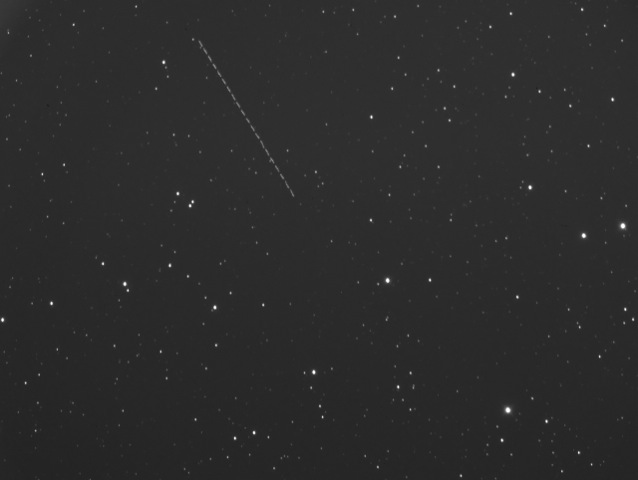 |
|
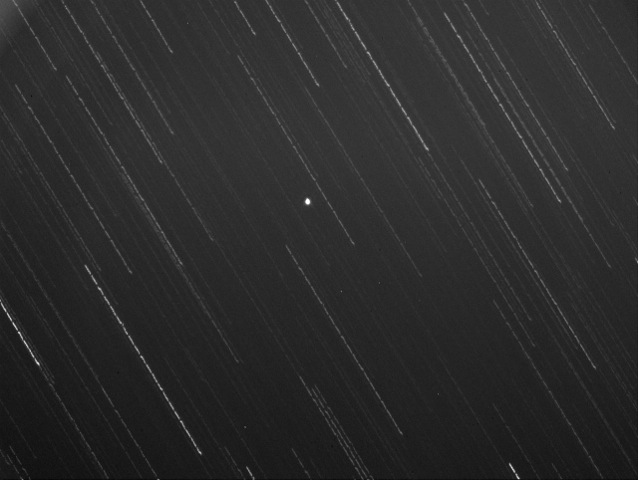 |
|
|
Two images of Gaia taken on 19 December 2013. The first image was taken between 20:45 - 21:15h UTC at Heerhugowaard, The Netherlands. This photo contains 20 subs from 60 sec. Filtertype=L. Telescope RC8 + QSI583wsg + 0.75 reducer.
|
|
| Nick James, Chelmsford, UK | |
|
Timelapse of the Gaia spacecraft taken using a C11 telescope and ST9XE CCD. Each frame is a 5s exposure and the animation is played at 25 fps. At the time the images were taken Gaia was around 158,000km away about 16 hours after launch. The field of view is 13 arcminutes square. Nick got his great shots from his back-garden observatory in Chelmsford, Essex, around 50km NE of central London. GBOT, the Ground Based Orbit Tracking campaign, very much appreciates Nick's submission as it is helping them to determine the quality of their ephemerides and to get information on the brightness of the vessel. |
|
| Henk Munsterman, Meppel, The Netherlands | |
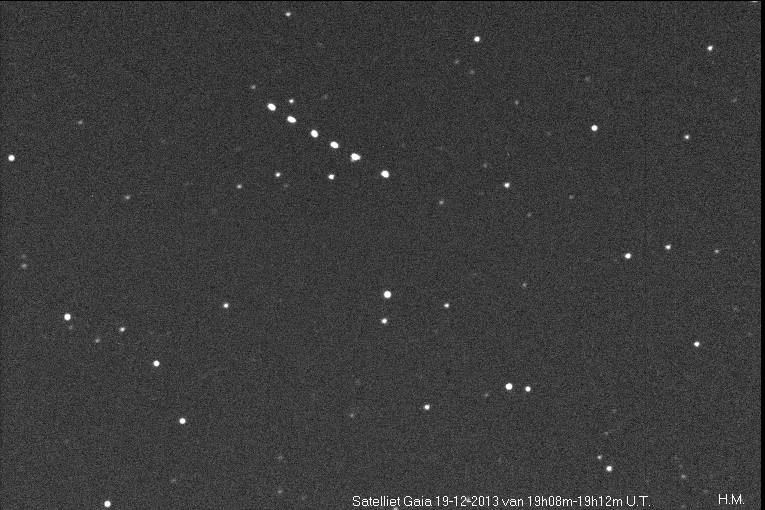 |
|
| Taken on 19 December 2013 between 19:08 - 19:12 U.T. | |
| Christovao Jacques, Joao Ribeiro, Eduardo Pimentel, Oliveira, Brazil | |
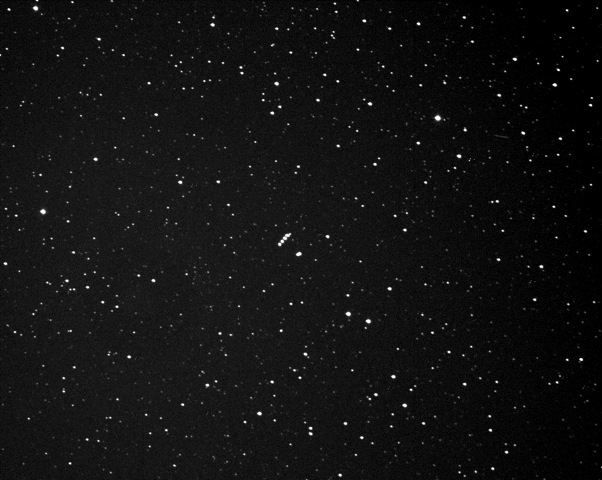 |
|
|
This image is a stack of four images, 5 seconds exposure each with intervals of 40 seconds. It was taken on 20 December 2013, 00:08 UTC. Sonear Observatory - MPC code Y00 - 450mm f/2.8 |
|
| Pi-of-the-sky project, Huelva, Spain | |
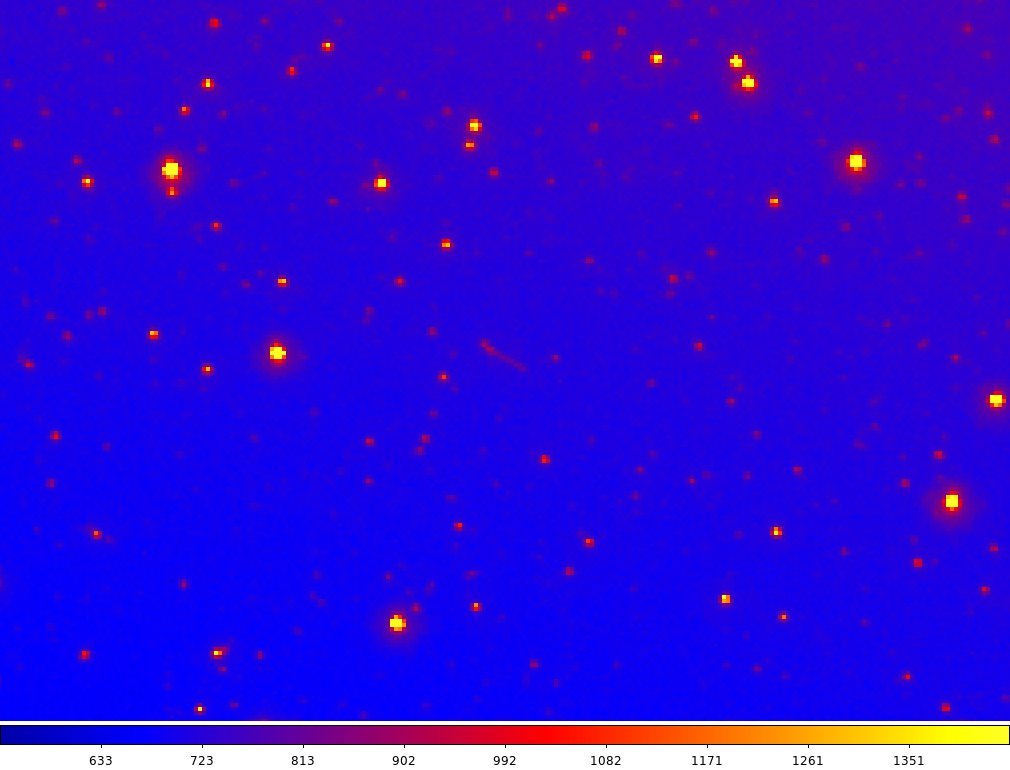 |
|
| The "Pi-of-the-sky project" took a series of pictures of Gaia as it was leaving Earth. The image above uses false colours to enhance details. Additional information about the image as well as the whole series is available on the "Pi-of-the-sky" website. | |
| Arto Oksanen and Caisey Harlingten, Chile | |
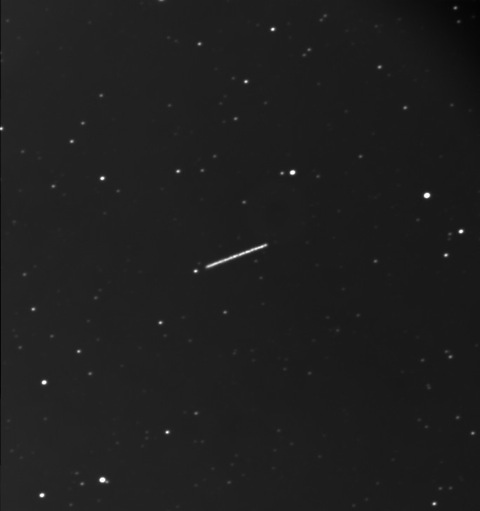 |
|
|
Gaia imaged using a remote observable telescope in Chile. The satellite was bright, about 10.4 magnitudes (V band reference). This is a composite of 20 unfiltered 20s exposures taken on 20 December at 08:30-08:40 UTC.
|
|
| Philippe Dupouy, Dax, France | |
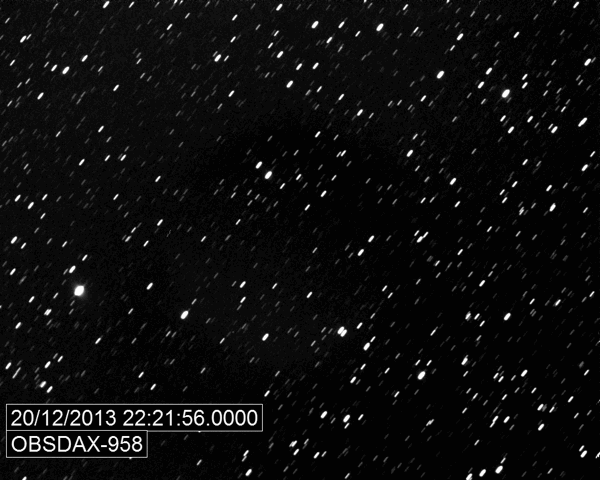 |
|
| TEL 0.43-m f/2.7 reflector + CCD. Taken on 20 December 2013. | |
| Leonid Elenin, ISON-NM Observatory (H15), Mayhill, New Mexico, USA | |
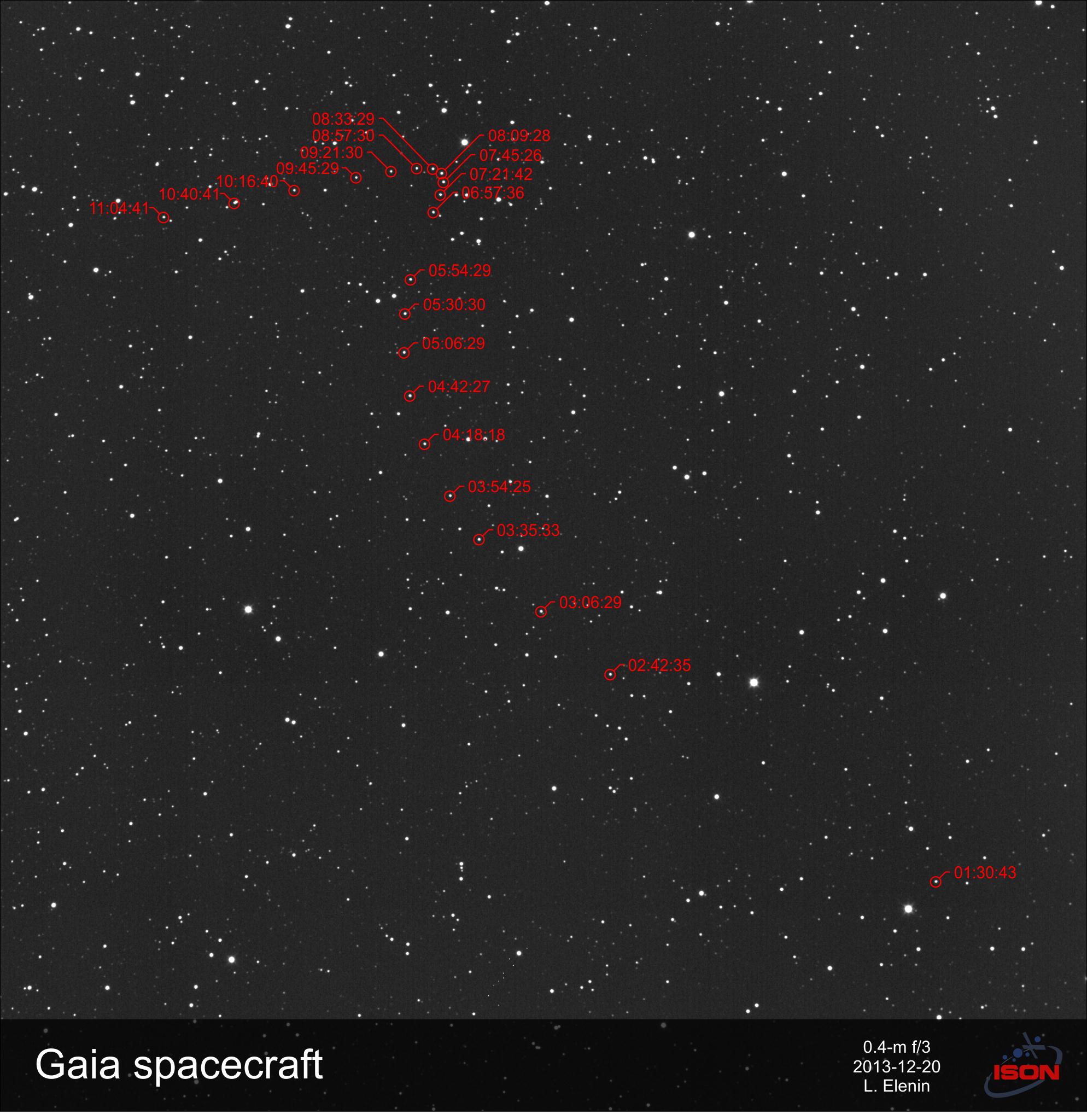 |
|
| Composite taken on 20 December 2013 between 01:30 - 11:04 U.T. | |
| Martin Keel, MónNatura Pirineus, Spain | |
| Gaia observed from MónNatura Pirineus (Planes de Son, MPC C29) with a 40cm telescope, on the night of 20 December 2013 from 19h to 20h30 UT. | |
| Sascha Schüller, Brühl, Germany | |
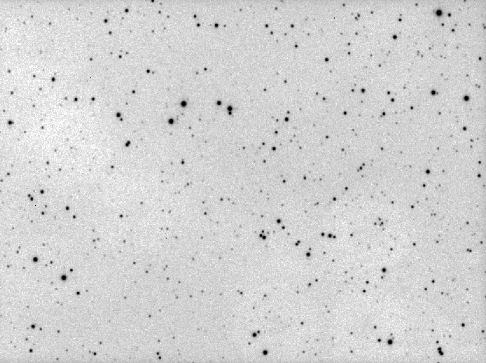 |
|
| Taken on 20 December 2013 between 20:13 UT and 20:47 UT in Brühl, Germany (50°48min N; 6° 53min E). Position in the sky: 5:41:04.6 +13:18:59.3. Exposure time single shot: 5 min | |
| Martin Fiedler, Radebeul, Germany | |
 |
|
| Series of 22 images taken on 20 December, 22:02 - 22:15 UT with a 14" f/4.5 MakNewton and a ST10XME CCD camera. | |
| SARA consortium (William Keel), Cerro Tololo, Chile | |
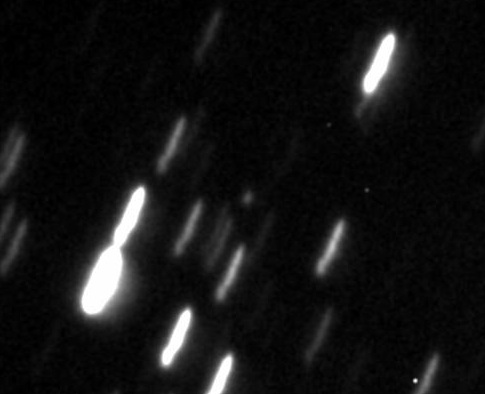 |
|
| Mildly-smoothed image taken on 21 December 2013 at 01:21 U.T. with the remotely-operated 0.6-m telescope at Cerro Tololo, Chile, operated by the SARA consortium (Bill Keel). Exposure time was 5 minutes. Estimated R magnitude is 17.57 +/- 0.05 (spacecraft range ~ 297,000 km). This image was taken with Gaia's nominal solar aspect angle (45 degrees), explaining why it has "suddenly" become significantly fainter. | |
| Arto Oksanen and Caisey Harlingten, San Pedro de Atacama, Chile | |
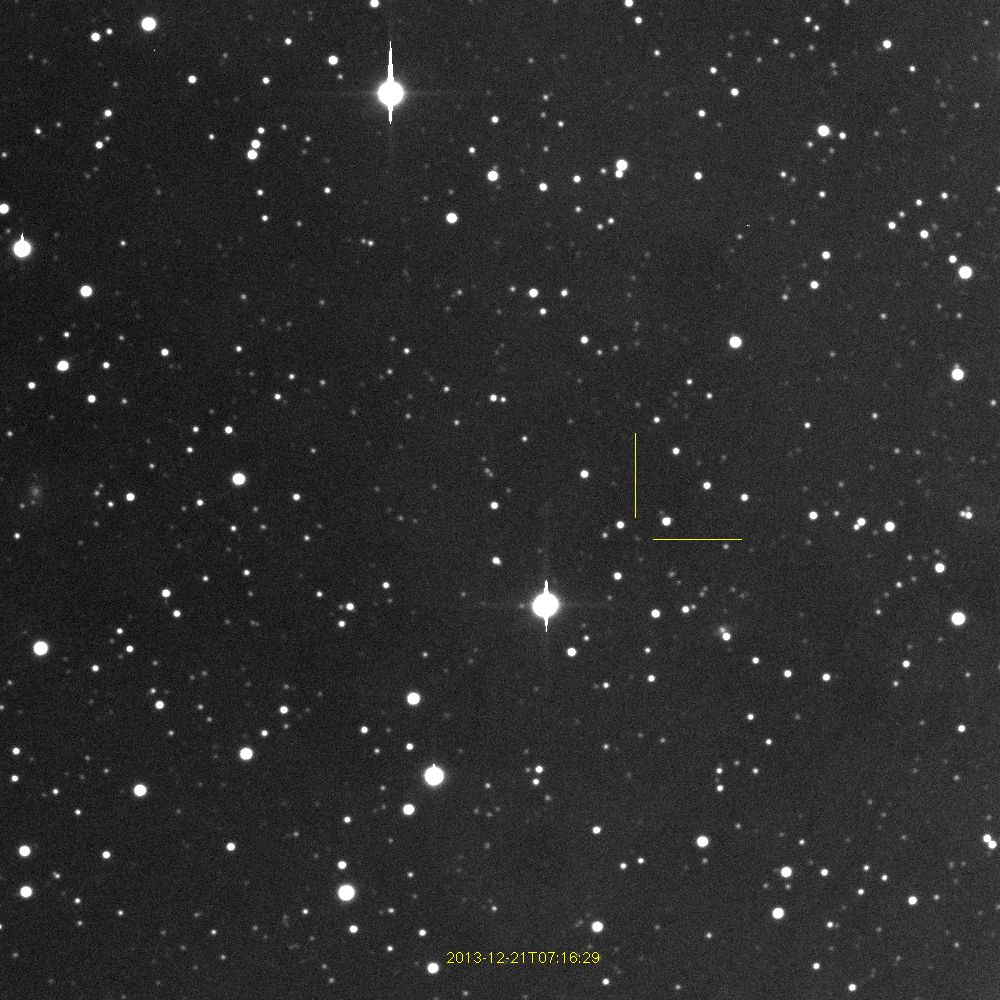 |
|
| Image taken at 7:16 UT on December 21, 2013 from San Pedro de Atacama, Chile. The estimated brightness is about 18 magnitudes. This is a single 60 second exposure with a remote observable 50 cm telescope. A video of all images taken between 08:28 UT and 08:40 UT can be found on You Tube. | |
| Nick James, Chelmsford, UK | |
| Images taken on 22 December 2013. At the time this timelapse was taken Gaia was almost 480,000 km away. Each frame of this timelapse is 10 minutes of exposure tracked on the spacecraft so the stars are streaks. | |
| Arto Oksanen and Caisey Harlingten, San Pedro de Atacama, Chile | |
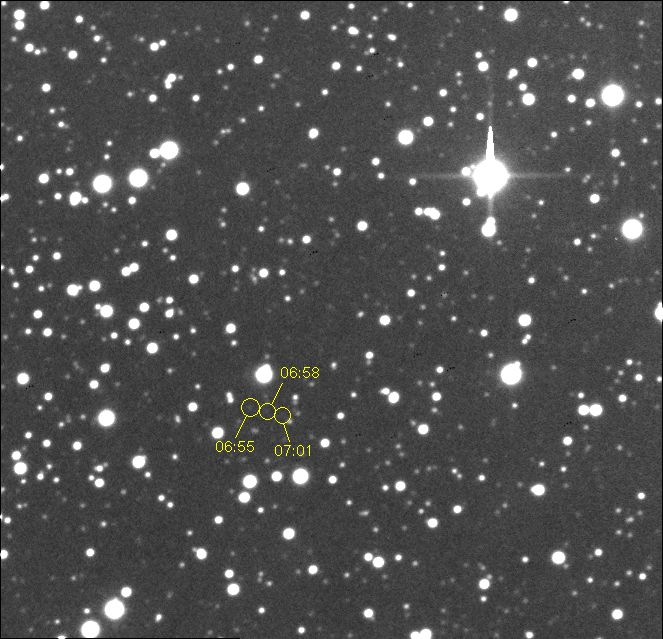 |
|
| Gaia imaged on 26 December 2013 at 06:55-07:02 UT with a remote operated telescope in San Pedro de Atacama, Chile. The faint trail is marked with yellow circles. The distance to the satellite was just about 700,000 km. Magnitude estimate 19 with R-band reference. | |
| Thüringer Landessternwarte, Tautenburg, Germany | |
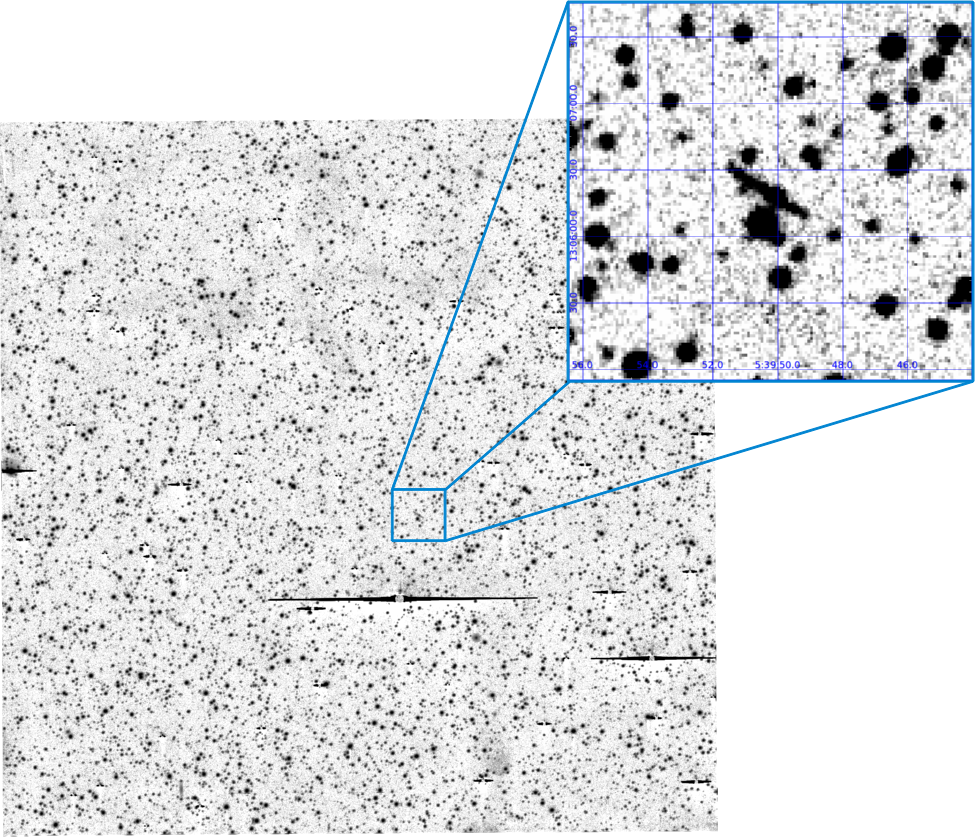 |
|
| Image of Gaia taken 1.5 days into the mission. For more information (in German), visit the TLS website. | |
| The copyright lies with the photographers/astronomers who took the pictures. | |

